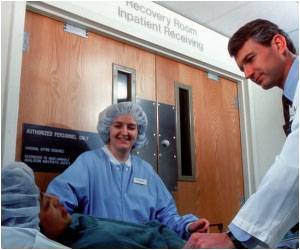Increased severity of malpractice incidents during U.S. daylight saves time over three decades.

Medical malpractice litigation and daylight saving time
Go to source). Results show that both medical malpractice incident severity and payment decisions were higher during the months of daylight saving time compared with the months of standard time, after controlling for whether states observe daylight saving time.
‘Research spanning three decades exposes a correlation between daylight saving time and heightened medical malpractice severity, prompting calls for policy reevaluation for public health.
#malpractice #daylight #medical
’





Payment decisions also were higher, but medical incidents were not more severe, during the one week following the spring transition to daylight saving time. “The spring daylight saving shift has long been connected to sleepiness, cardiovascular events, and driving accidents, but only recently have we begun to recognize that decision-making processes are also affected at the population level by the spring time shift,” said principal investigator Michael Scullin, who has a doctorate in psychological science and is an associate professor of psychology and neuroscience at Baylor University in Waco, Texas.
“The current results add to this literature by showing that an area that one would hope would be immune — medical errors and malpractice litigation — is susceptible, too.”
Thirty Years of Malpractice Claims
According to the AASM, standard time is optimal because it is closely aligned with the position of the sun in the sky, known as “solar time.”This synchrony is important for the body because sunlight is the most powerful external cue for the human circadian rhythm, the internal “body clock” that regulates the timing of alertness, sleepiness, and other biological functions.
By artificially shifting clock time an hour forward, daylight saving time causes a misalignment between clock time and solar time, disrupting the circadian rhythm. This disruption can affect sleep, alertness, mood, and performance.
Advertisement
To investigate the acute effects of daylight saving time, they compared claims for one week before and after the springtime change.
Advertisement
Did You Know?
Medical malpractice is one of the leading causes of death in the United States, accounting for thousands of fatalities each year.
“In addition to the acute shift to daylight saving time, it is possible that several months of living under daylight saving time leads to accrued circadian misalignment, which then could affect medical errors and legal evaluations,” said Gao, who has a doctorate in behavioral neuroscience and is a postdoctoral research fellow in the department of anesthesia, critical care, and pain medicine at Massachusetts General Hospital in Boston.
“Our work joins numerous other studies that document the detrimental effects of spring daylight saving time transitions, and the collective evidence should encourage stakeholders and policymakers to reevaluate daylight saving time for the well-being of the general public.”
Scullin and Gao were assisted by Candice Lage, who is a research assistant in the Sleep Neuroscience and Cognition Laboratory at Baylor.
The researchers were supported by grants from the National Science Foundation, National Institutes of Health, Alzheimer’s Association, American Academy of Sleep Medicine Foundation, BrightFocus Foundation, and National Institute on Aging.
Reference:
- Medical malpractice litigation and daylight saving time - (https://jcsm.aasm.org/doi/10.5664/jcsm.11038)
Source-Eurekalert









